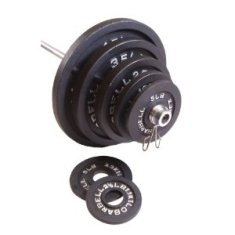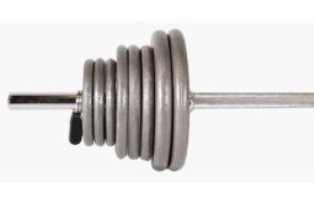How to Determine When To Increase/Decrease Weight in Weight Training Exercises
| | |
Adjusting Training Loads properly is the key to weight training
Progressive Resistance is the name of the game and increasing weights is the key to intense training.
Find out an excellent formula to determine when to increase weight in your exercise workouts.
In the previous articles you discovered how to select best exercises and determined your starting training loads. Here you will determine when and how to increase weight on exercises.
Do I need to increase weight?
In the Progressive Resistance Article you learnt how training intensity is the key for results.
If you want to be immense { muscle and definition } you got to train intense. And of the 3 factors training intensity, frequency and duration, adding more intensity by increasing weight is the most effective.
Although there is a limit to the duration and frequency of training { both can easily lead to overtraining }, gradually increasing training loads is not only limitless but also very rewarding.
The X + 3 Formula for Progressive Resistance.
You have been training for a while now and the weight seem to get easier. Use the X + 3 formula to determine when to add weights, where X is the maximum number of reps you lifted in your workout the last time.. Simply stated if you can perform 3 more reps than your intended rep range for 2 consecutive sets then you can increase weight on that exercise.
Add 5-10 lbs for major muscle exercises and 2.5-5 lbs for minor muscle exercises.
So remember its reps before weight when you decide to up the tempo.
For Example - Lets take Bench Press. Say the highest number of your intended rep range is 9. If you were able to lift 12 or more reps in the last 2 sets of your chest workout, then you can add weights to stay in the intended rep range.
I am sure now you realize how important it is to maintain your weight training journal.
Decreasing Weight Training loads?
Sometimes when you are coming after a break, after injury or after some disease {ranging from common cold to fever or more } you may need to reduce weight training load and help your body get used to the training. Fortunately it takes only a few weeks before you are able to train as before and more.
Keeping your Weight Training Balanced
It is often said that it is important to keep equilibrium in everything in life. This is true with weight training as has been proven to be true in other areas.
When you are doing weight training, you always want to make sure that you are improving and not staying on the same level.
In order to do this, you will have to progressively increase the weight that you are training with. Sometimes however, you may find that the training becomes very difficult as weights become too heavy for you. Here are the steps you need to take in order to address these two extremes and get the greatest benefits from your training periods.
What to do when the training load in the gym gets too heavy
Sometimes, you train and progressively increase the load until you can go no further.
This is one of the principles if you are going to build weights. But when do we consider that the weight has become too heavy?
Usually the weights are said to be too heavy when you can no longer lift them while keeping the correct posture and training form.
If you cannot keep your posture, it therefore means you are not correctly exercising the areas that the particular exercise is supposed to target and you might be putting yourself in danger of injury like muscle tears and undue pressure on you frame. When you get to this level, it is better to step off than to continue.
What to do when the training load in the gym becomes too easy
On the other hand you may get to a point in your training when you work on the weights and they seem to be offering no significant effect.
If you are going for endurance training, this might be a good thing as it will permit you to do a higher number of repetitions.
This training will also condition your muscles, but you will not be seeing muscle gains in the process.
If you have to see gains in muscles, then you will have to increase the weights by small increases each time during each training session. This will present an increasing challenge to your muscles, and will actually stimulate growth of the muscles.
ExerciseGoals.com Recommends - Building Muscle Program
Muscle Gain Truth Program Truth Program
Related Articles
- Advanced Weight Lifting Techniques
- Exercise Database
- How to Select a Gym for you.
- Major Muscle Groups and Exercises.
- Split Training Routines.
- Ideal Weight Training Frequency, sets, reps and FAQs.
- How to grip Weight Bars Correctly for better lifts.
- How to find the correct Lifting Speed.
- Proper Breathing during Lifting.
- How to Spot in Weight Training Room.
- When to Increase/Decrease Training Loads.
- Weight Training Sets
- Weight Training Reps
- Exercise Order/Sequence
- How to determine correct training loads
- Variety in your Training
Back to Weight Training Homepage.
Weight Training Quick Links
Body Types |Gym Membership |Weight Training Workouts |Weight Training Benefits |Beginner Weight Training |Advanced Weight Training Tips |Home Gym Exercises |Weight Training at Home |Weight Training Software |Weight Training Journals/Logs |Weight Training for Kids |Weight Training for Seniors/Elderly People |Weight Training for Middle Ages Men over 40 | Weight Training Videos | Weight Training Tips & Exercises |Upper Body Weight Training |Before/After Weight Training Pictures |







